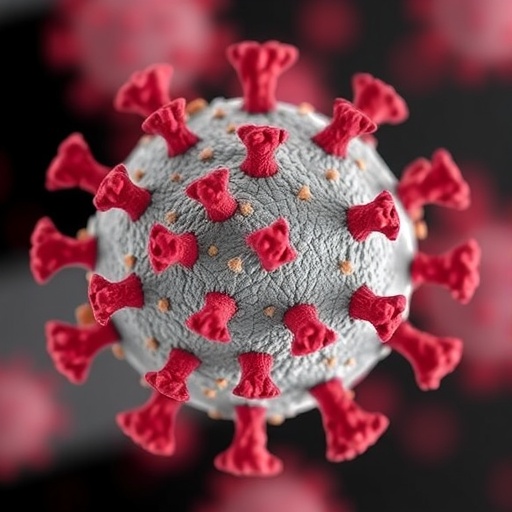Recent research has unveiled a critical facet in the intricate relationship between child-parent interactions and their profound effects on language comprehension and the manifestation of autism spectrum symptoms. This study, conducted by leading researchers Shah, Marzoratti, and Hofkens, delves into how the dynamics of these interactions can yield contrasting outcomes, highlighting the complexity of developmental psychology. Understanding the nuanced effects of various parenting styles and interaction quality is essential for optimizing child development and addressing potential challenges in children diagnosed with autism.
In the realm of child psychology, the significance of parent-child interactions cannot be overstated. These interactions serve as the foundation upon which children build their social and cognitive skills. This research takes a bold step forward by exploring the dual nature of these interactions: while positive engagement can enhance language skills, the same interactions may inadvertently exacerbate symptoms associated with autism. The investigators aim to unravel this complexity through empirical analysis, shedding light on how differing modalities of interaction can influence developmental trajectories.
The study recruited a diverse cohort of participants to ensure a comprehensive understanding of these dynamics across varying social and cultural contexts. By incorporating a range of child ages, backgrounds, and autism spectrum manifestations, the researchers meticulously collected data that reflect real-world scenarios. This approach not only enhances the generalizability of the findings but also provides a holistic view of how interaction quality can function differently for different children.
One of the key findings of the study was the contrasting effects of nurturing interactions versus those characterized by control and directive behavior. In instances where parents engaged in supportive, warm, and responsive interactions, children exhibited enhanced language comprehension abilities, showcasing the importance of emotional availability. Conversely, high levels of control and directiveness were found to correlate with increased autistic symptomology, suggesting a potential link between parental interaction styles and the degree of autism symptoms manifested in children.
The implications of these findings are profound, as they urge caregivers and practitioners to reevaluate how they engage with children, particularly those on the autism spectrum. It becomes apparent that fostering an environment of emotional support, along with validating children’s autonomy, could yield significant improvements in communication skills. Therefore, emphasis must be placed on training programs that equip parents and caregivers with the techniques necessary to substantively benefit from these interactions.
Moreover, the research highlights the critical window of development during early childhood, when the impact of parental behavior is most pronounced. Intervention strategies that focus on enhancing interaction quality could serve as a frontline approach to supporting children with language delays or autistic traits. Professionals in the realm of child development must prioritize evidence-based methods that advocate for positive interaction styles, ultimately leading to improved language outcomes and reduced symptom severity.
Expanding on the study’s findings, it becomes crucial to recognize the role of societal and cultural factors in shaping parent-child interactions. Different backgrounds may predispose varying degrees of control and support in parent-child dynamics. Understanding these cultural nuances can help tailor interventions and promote awareness about the importance of adapting parenting styles to suit individual children’s needs. This customization will likely yield better developmental outcomes across the board.
The researchers also delve into the biological underpinnings associated with these interactions, exploring the potential for neurobiological impacts. The responsiveness and warmth displayed during interactions may positively affect neurological pathways associated with language development. This raises questions about the roles of oxytocin and other neuropeptides, known for influencing social bonding and communication, suggesting a deeper biological connection that warrants further exploration.
As the dialogue surrounding autism and child development continues to evolve, professionals and families alike must be proactive in utilizing these insights. The validation of positive parenting practices not only supports language comprehension but may also serve as a protective factor against the escalation of autism symptoms. Ongoing education around supportive interaction styles will be essential as families strive to create nurturing environments for their children.
Furthermore, collaboration between researchers, educators, and practitioners is vital to translate these findings into actionable strategies. Workshops and training sessions focused on fostering positive child-parent dynamics should be implemented in community settings. An emphasis on practical applications will empower parents and caregivers to adopt effective interaction techniques that support not only language development but also emotional and social growth in their children.
In conclusion, the groundbreaking research of Shah, Marzoratti, and Hofkens underscores the critical importance of high-quality child-parent interactions and their differential impacts on language skills and autism symptomatology. By promoting warm and engaging interaction styles, we can pave the way for healthier developmental trajectories in children, particularly those on the autism spectrum. As we further dissect these complex relationships, it becomes essential to recognize the ever-pressing need for continued research and community engagement to enhance our understanding of child development.
The insights gained from this research hold promise for shaping future methodologies in both clinical settings and home environments. Emphasizing the quality of interactions over strict behavioral control could revolutionize approaches in fostering language development and managing autistic traits. Moving forward, an integrated approach that combines empirical evidence with actionable strategies could provide the key to unlocking the full potential of every child.
This vital research not only contributes significantly to our understanding of child development but also reinforces the need for ongoing dialogue among researchers, practitioners, and families. As we move towards a more nuanced understanding of how interaction quality shapes child outcomes, the possibility for improved strategies to manage and support children with autism becomes ever more tangible. We stand at an important crossroads in developmental psychology, where embracing these findings offers a beacon of hope for children and their families seeking support.
Emphasizing evidence-based practices derived from this research can significantly tilt developmental processes favorably for children struggling with communication and social interactions. Evidence, as presented in this study, suggests that fostering supportive and responsive parent-child relationships is not merely beneficial but essential. The path forward hinges on our commitment to continuous learning, adaptation, and empathy, ensuring that every child receives the support they require to thrive.
Subject of Research: Child-Parent Interaction Quality in Relation to Language Comprehension and Autism Symptomatology.
Article Title: Child-Parent Interaction Quality Shows Opposite Relationships with Language Comprehension Skill and Autism Symptomatology.
Article References: Shah, L., Marzoratti, A., Hofkens, T.L. et al. Child-Parent Interaction Quality Shows Opposite Relationships with Language Comprehension Skill and Autism Symptomatology. J Autism Dev Disord (2025). https://doi.org/10.1007/s10803-025-07095-1
Image Credits: AI Generated
DOI: 10.1007/s10803-025-07095-1
Keywords: child development, autism spectrum disorder, language comprehension, parent-child interaction, developmental psychology.
Tags: autism spectrum symptomschild-parent interaction effectscontrasting outcomes of interactionscultural context in child developmentdevelopmental psychology insightsempirical analysis in psychologylanguage development and autismnuanced effects of parentingoptimizing child development strategiesparenting styles and child outcomespositive engagement in child developmentsocial and cognitive skills in children





